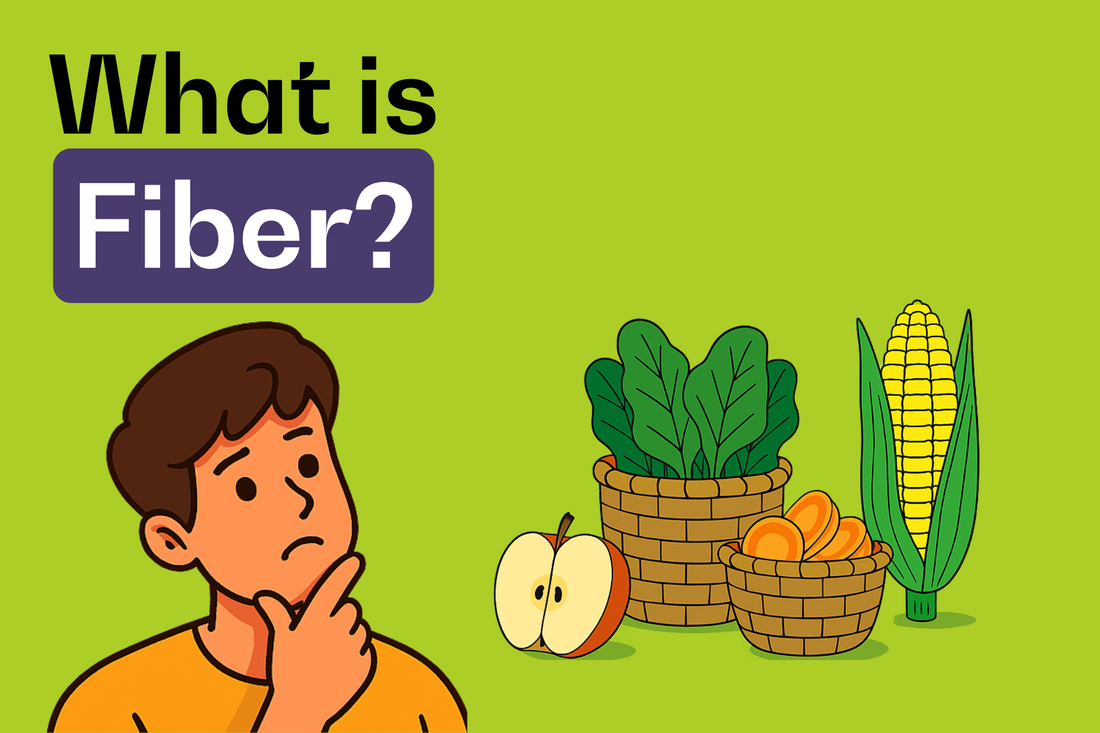
High Protein, Low Carb, but Where’s the Fiber?
SHAILENDRA YADAVShare
High Protein, Low Carb, but Where’s the Fiber?
A lot of buzz has been made around protein, carbs, even fats. But there’s one nutrient silently missing from most of our plates — fiber.
I didn’t give it much thought either. But the more I looked into how our modern diets work, especially in India, the clearer it became: fiber isn’t just something to “help with digestion” — it’s the foundation of long-term health. And we’re barely getting any of it.
So, What Is Fiber, Really?
Fiber is a type of carbohydrate that your body can’t digest. It doesn’t provide calories — but it plays a critical role in how our body processes food, manages energy, and stays healthy. There are two types:
- Soluble Fiber: Dissolves in water to form a gel. It slows digestion and helps regulate blood sugar and cholesterol. Found in oats, legumes, fruits like apples, and psyllium husk.
- Insoluble Fiber: Adds bulk to stool and helps food move through your system, preventing constipation. Found in whole grains, nuts, seeds, and veggies.
In short: soluble fiber feeds your gut bacteria, and insoluble fiber keeps things moving.
Why Are We Missing Out?
Our grandparents didn’t talk about “fiber” — they just ate it. Millets, dal-chawal, subzis, seasonal fruits — all rich in natural fiber.
But today?
- Refined maida, sugar, and oil-based snacks dominate grocery shelves.
- People are skipping fresh meals for packaged convenience foods.
- Even "health" products are often ultra-processed and fiber-stripped.
As a result, most urban Indians are getting less than 15 grams of fiber per day, when the recommended minimum is 25–30 grams.
The Science Is Loud and Clear
Fiber doesn’t just help you poop. It does a lot more.
According to a 2021 Lancet review, people consuming more than 25–29 grams of fiber daily showed significantly lower risks of heart disease, type 2 diabetes, stroke, and colorectal cancer. Fiber helps feed beneficial gut bacteria, which in turn produce short-chain fatty acids (SCFAs). These SCFAs support gut integrity, immune balance, and even mental health.
And guess what? Low-fiber diets have been linked to increased inflammation, poor blood sugar control, and mood swings.
How Can You Add More Fiber to Your Day? (Without Stress)
Small changes go a long way:
- Start your day right: Overnight soaked oats with chia, banana, nuts; Multigrain paratha with methi or palak
- Lunch boost: Switch white rice to red or brown rice; Add a katori of sprouts or cooked dal salad
- Snacks that help, not harm: Roasted chana, makhana, or homemade trail mix; Fresh fruit instead of packaged juice
- Dinner ideas: Millet khichdi with veggies; Sabudana with ground peanuts and sautéed veggies
Bonus tip: When increasing fiber, also increase water intake. Fiber absorbs water, and staying hydrated keeps your system happy.
So... Why Should You Care?
Because fiber is freedom — from bloating, fatigue, constipation, sugar crashes, and more. It doesn’t cost extra. It doesn’t need supplements. It’s about eating the kind of food your body has evolved to love.
Change starts with awareness. And awareness starts with your plate.
If enough of us start demanding better, the market will follow. But until then, your best bet is to outsmart the system — one fiber-rich bite at a time.
FAQs
Some of the best high-fiber foods include dals (like masoor, moong), whole grains like brown rice and millets, fruits like guava, apple, and banana, vegetables with skin, and seeds like chia and flaxseeds.
The recommended daily intake is around 25–30 grams for adults. Most urban diets fall short — getting only 10–15 grams per day.
No, animal-based foods like meat, eggs, and dairy do not contain dietary fiber. Fiber comes only from plant-based sources like grains, fruits, vegetables, legumes, and seeds.
Start small: add chopped veggies to dal, sprouts to breakfast, or snack on roasted chana or makhana. Nutty Village also offers natural snacks and nut butters that retain wholesome fiber.
Yes, natural peanut butter contains a decent amount of dietary fiber — around 2–3 grams per 2-tablespoon serving. It’s a great way to add fiber along with healthy fats and protein. Just make sure it’s the unsweetened, unprocessed kind — like the ones made by Nutty Village!
Peanut butter made with whole peanuts contains both soluble and insoluble fiber, which support gut health and digestion. Pair it with whole grain toast, fruits, or oats for a balanced, fiber-friendly meal.







